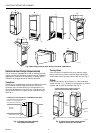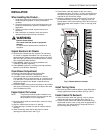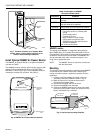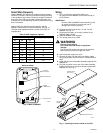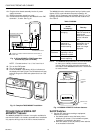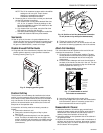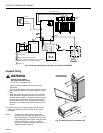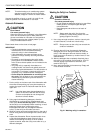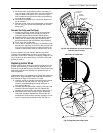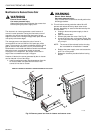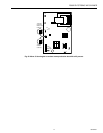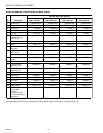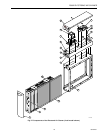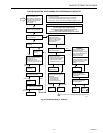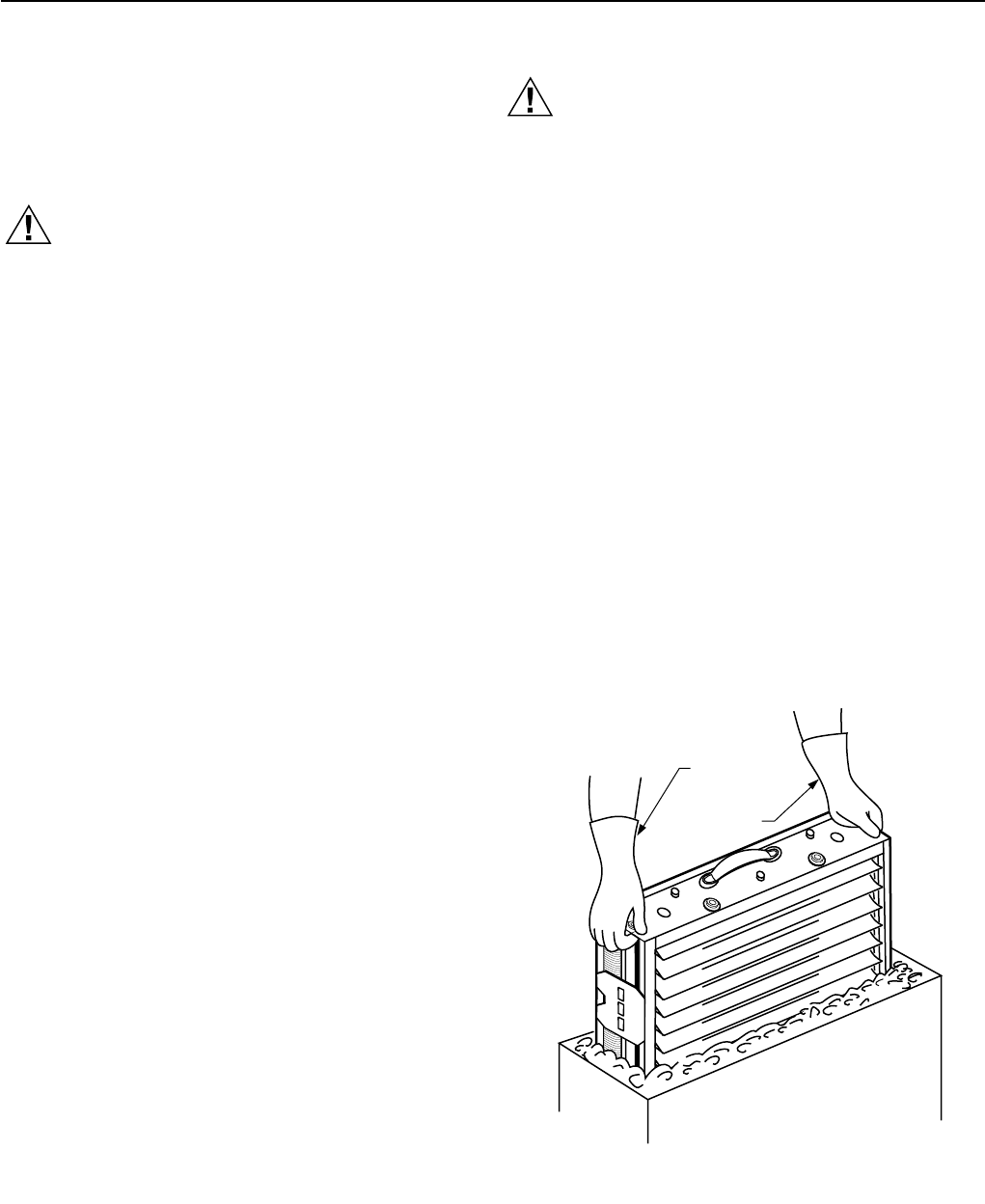
F300E ELECTRONIC AIR CLEANER
68-0240-1
14
NOTE: To let the heating or air conditioning system
operate normally while the cell(s) are being
washed, simply turn off the air cleaner switch.
Vacuum the prefilter or brush, or soak it in a tub. Do not
wash the prefilter in the dishwasher or car wash.
Automatic Dishwasher
CAUTION
Burn Hazard.
Can cause personal injury.
Allow the cell(s) to cool completely in the dishwasher
at the end of the wash cycle or wear protective
gloves to avoid burns. Hot water can accumulate in
the tubes supporting the collector plates. Tip the
cell(s) so these tubes will drain.
Record wash times on the chart on last page.
IMPORTANT
• Check the dishwasher owner’s manual. Some
manufacturers do not recommend washing
electronic cell(s) in their dishwashers.
• If the dishwasher has upper and lower arms,
position the cell(s) carefully to allow good water
circulation.
• Be careful to avoid damaging the cell(s) when
placing them in the dishwasher. Broken ionizer
wires or bent collector plates are not included in the
warranty.
• Very dirty cell(s), especially from tobacco or
cooking smoke, can discolor the plastic parts and
the lining of some dishwashers. This discoloration is
not harmful. To minimize it, wash the cell(s) more
frequently or try a different brand of detergent.
• Do not allow the dishwasher to run through the
dry cycle. This will bake on any contaminants not
removed during the wash cycle and reduce air
cleaner efficiency.
1. Put the cell(s) on the lower rack of the dishwasher with
the airflow arrow pointing up. It may be necessary to
remove the upper rack. Do not block water flow to the
upper arm.
HINT: Lay a few large water glasses between the
spikes on the lower rack and rest the cell(s)
on them so the spikes do not damage the
aluminum collector blades.
2. Using regular dishwashing detergent, allow the
dishwasher to run through the complete wash and
rinse cycle. Do
not
use the dry cycle. To avoid burns,
let the cell(s) cool completely before removing, or wear
protective gloves when removing the cell(s).
Remember that water may be trapped inside the
cell(s). Tip the cell(s) so the tubes can drain.
3. Wipe the ionizer wires and contact board on the end of
the cell using thumb and forefinger with a small, damp
cloth.
4. Inspect the dishwasher. Rerun the wash and/or rinse
cycle with the dishwasher empty if there is dirt or
residue from washing the cell(s). If dirt or residue
seems excessive, wash the cell(s) more often or try a
different detergent.
Washing the Cell(s) in a Container
CAUTION
Hazardous Chemical.
Can cause personal injury.
• Do not splash the detergent solution in eyes. Wear
rubber gloves to avoid prolonged detergent
contact with skin.
• Keep detergent and solution out of reach of
children.
NOTE: Always wash the cell(s) first, then the
prefilter(s), to keep heavy prefilter lint from
getting caught in the cell(s).
1. Use a large enough container, such as a laundry tub
or trash container, to hold one or both cell(s).
NOTE: Sharp corners on the cell(s) can scratch the
surface of a bathtub.
2. Dissolve about 3/4 cup of automatic dishwasher
detergent per cell in enough hot water to cover the
cell(s). If the detergent does not dissolve readily, or
forms a scum on the water, try another brand, or use
softened water.
3. After the detergent has completely dissolved, place
the cell(s) in the container and let soak for 15 to 20
minutes. Agitate up and down a few times, and
remove. See Fig. 21.
4. Next, wash the prefilter(s) the same way. Empty and
rinse the wash container.
Fig. 21. Washing cell(s) in container.
M922A
WEAR GLOVES
TO PROTECT
HANDS FROM
DETERGENT
SOLUTION.



